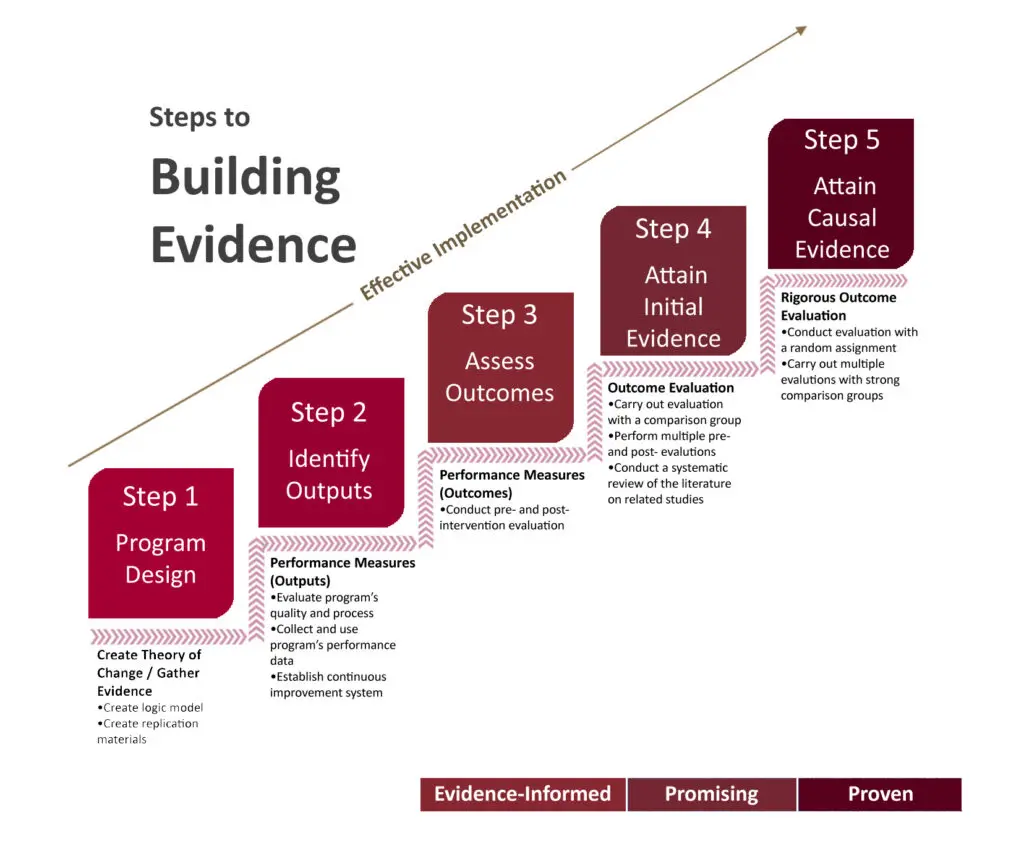The Colorado Lab has built a strong reputation by consistently conducting high-quality, responsive, and actionable work. Our organizational culture centers around learning, integrity, and kind, open, and honest communication. We believe these are the reasons we have established long-lasting relationships with many of our government, community, and research partners. As of spring 2024, we have had the privilege of working with 32 government and community partners and 38 research partners in support of 67 projects. And that’s just since we took on our first project in the fall of 2017. Word of mouth is our best source for new partnerships, so if you’ve enjoyed working with us, please spread the word!
Our 3 Years in Action Report shows where we were in 2020. Explore the rest of our website to learn how far we’ve come since then.
Our Approach to Building Evidence
The Colorado Lab works with state and local government and community partners throughout the life cycle of a project, from identifying a challenge or opportunity to scaling and sustaining change. Our projects typically include a state or local government and/or a community partner. We use the Steps to Building Evidence to meet partners where they are on their particular project and build partner capacity to review data, make meaning, and take evidence-based action.

The Colorado Steps to Building Evidence model is used by the Governor’s Office of State Planning and Budgeting when considering budget requests. This model is essential in describing how the Colorado Lab does business. We identify the most appropriate methods to answer questions posed by our government and community partners. We meet them where they are on this continuum, regardless of where they start, and support them in moving to the next level.
It is through this unique approach that we generate insights that can be used to improve policies, practices, and ultimately the lives of Coloradans. To generate actionable information, Steps 1 through 3 must all be addressed. Ideally, these are completed in order, but in reality, many programs are working on multiple steps simultaneously. Leaping to Steps 4 or 5 without laying this foundation can lead to wasted money and no results, or even worse, misleading results.
The first step in building evidence for a program is:
- Clearly and explicitly defining the essential program elements.
- Understanding the logic behind why those elements are expected to lead to change in the desired outcomes and visualizing that thinking through a theory of change.
- Establishing program expectations and requirements in a manual.
This step is especially important when programs are decentralized and organizations are diverse. There is no coherent program to build evidence about without clarity around what the essential elements are.
The second step is to determine that programs are consistently and effectively delivering what they promised. It is important to determine what it means to administer the essential elements from Step 1 in sufficient dosage to drive change in the desired outcome. Once the criteria for sufficient dosage have been determined, they need to be communicated to the field. Tools are needed to measure the extent to which the criteria are being met in practice and to identify areas where support is required. Only after fidelity of implementation has been established in the field does it make sense to proceed with an outcomes evaluation.
The third step in building evidence is reliably measuring the program outcomes identified in the theory of change from Step 1. Outcomes can be tracked over time as part of a performance management process or by conducting a formal pre-post assessment.
The fourth and fifth steps in building evidence establish causal evidence of a program’s impact by comparing the outcomes of those who received the program with the outcomes of a control group. The most reliable way to do this is to conduct a randomized controlled trial like those used in vaccine and drug trials. This approach is needed to reach Step 5. Other “quasi-experimental” methods that mimic randomization using statistical approaches can often be accomplished using administrative data, taking a program to Step 4.
